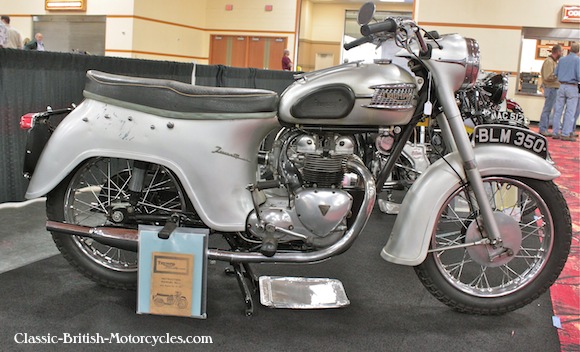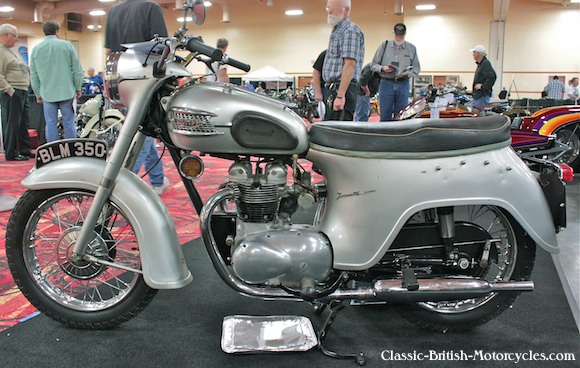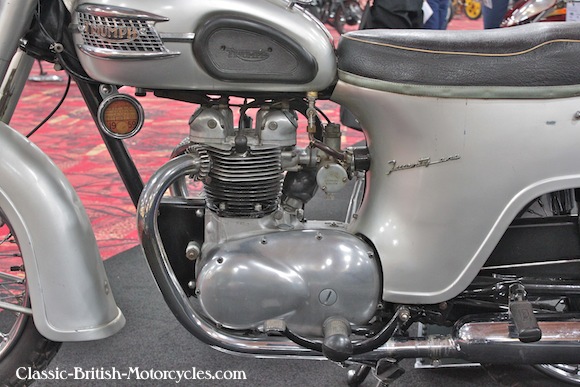1959 TRIUMPH TWENTY-ONE HAS BATHTUB STYLING.
The British home market had been hungry for cheap transportation after WWII, and commuter motorcycles helped fill that role. But England being…well, England, was wet and rainy and to prevent rust an owner needed to wipe his bike down each night after getting home from work. This was a chore that most came to hate. The British motorcycle industry responded with what are now called “enclosed bikes” as a way to make them easier to clean. Unfortunately, the gunk still found it’s way into the new enclosures and rusted them from the inside out. Triumph had its swing at this fad, and it started with the 1959 Triumph 3TA Twenty One (350) and its big-sister-bike, the 1959 5T Speed Twin (500). Both had bulbous sheetmetal enclosures over the entire rear section of the bike, along with a huge full-valance front mudguard (fender) and old fashioned headlight nacelle. The look quickly spawned the nickname “Bathtub Triumph” and the name stuck. 55-odd years later, that’s still what we call them today.
1959 TRIUMPH TWENTY-ONE GOES UNIT CONSTRUCTION
Unit construction was all the rage in England back in the 1950s. Essentially, non-unit construction is when the engine, primary case and gearbox are all separate components that are bolted together in the frame. It was the old way of doing things, but it was time to move on. Unit construction meant taking all these separate component and “unitizing” them, that is placing them all in one common casing. Hence the term “unit construction”. The first bike to benefit from this was the 350cc Twenty One, which converted over in 1957. Next up was the 500 twin (5T , TR5 and T100) in 1959. Their big 650 twin, once sharing components with the smaller non-unit 500 twins, was now a stand-alone engine design. It took until the 1963 model year to redesign the 650 twin into unit-construction.
1959 Triumph Twenty-One SPECIFICATIONS
| Model designation Engine configuration Displacement Bore & Stroke Compression Ratio Fuel system Primary drive Clutch Gearbox Shifter Final drive Horsepower @ RPM Frame Rear Suspension Front Suspension Brakes, front Brakes, rear Tire, front Tire, rear Wheelbase Overall length Seat height Curb weight Fuel capacity |
3TA OHV air-cooled vertical twin 348cc / 21 ci 58.3mm x 65.5mm 7.5:1 1- Amal Monobloc Chain Multi-plate, wet 4-speed constant mesh Right-foot Chain 18.5hp @ 6500 rpm Single down tube Swing arm w/2 Shocks Telescopic forks 7-inch SLS drum 7-inch SLS drum 3.25 X 17 3.25 X 17 53.5in / 1360mm 87in / 2115mm 28.5in / 724mm 340 lb / 154.4 kg 4.4 US gal / 16 L |




